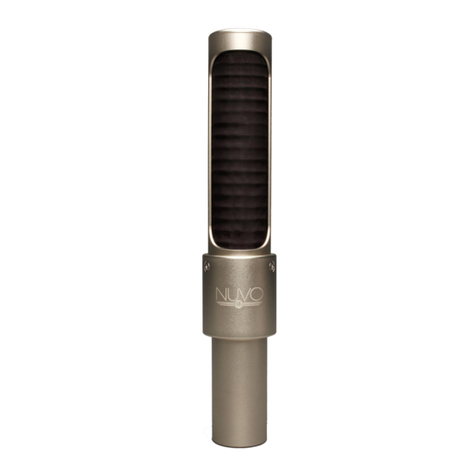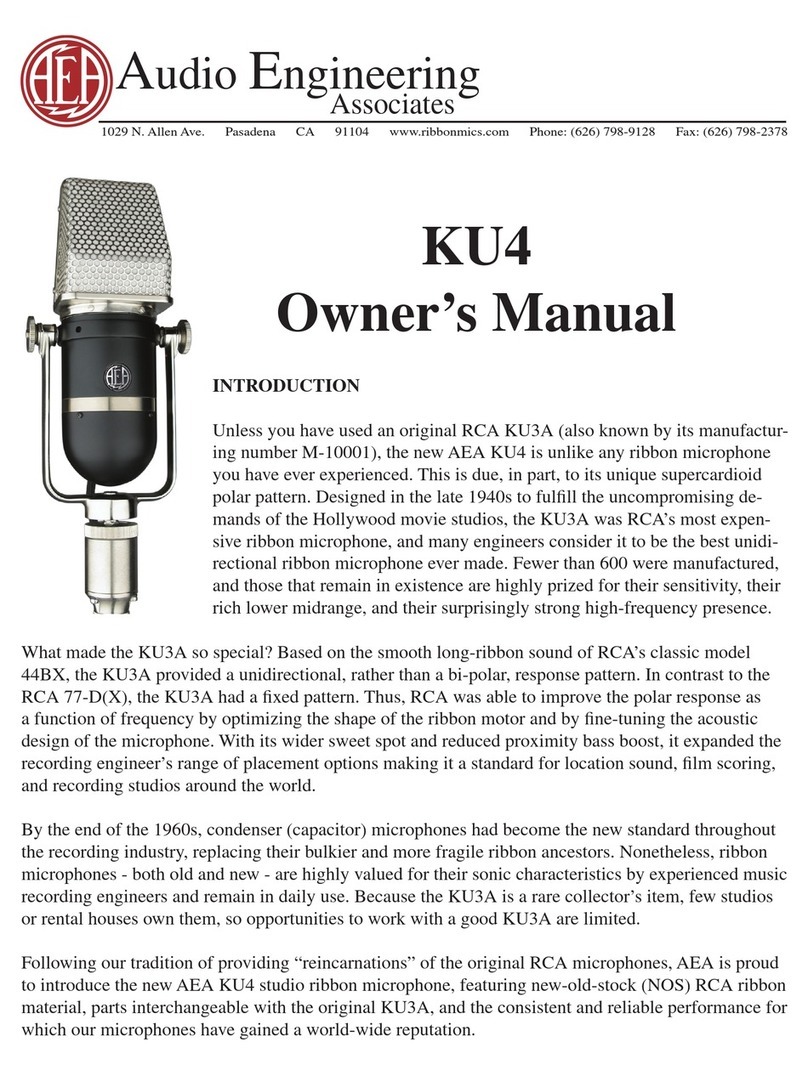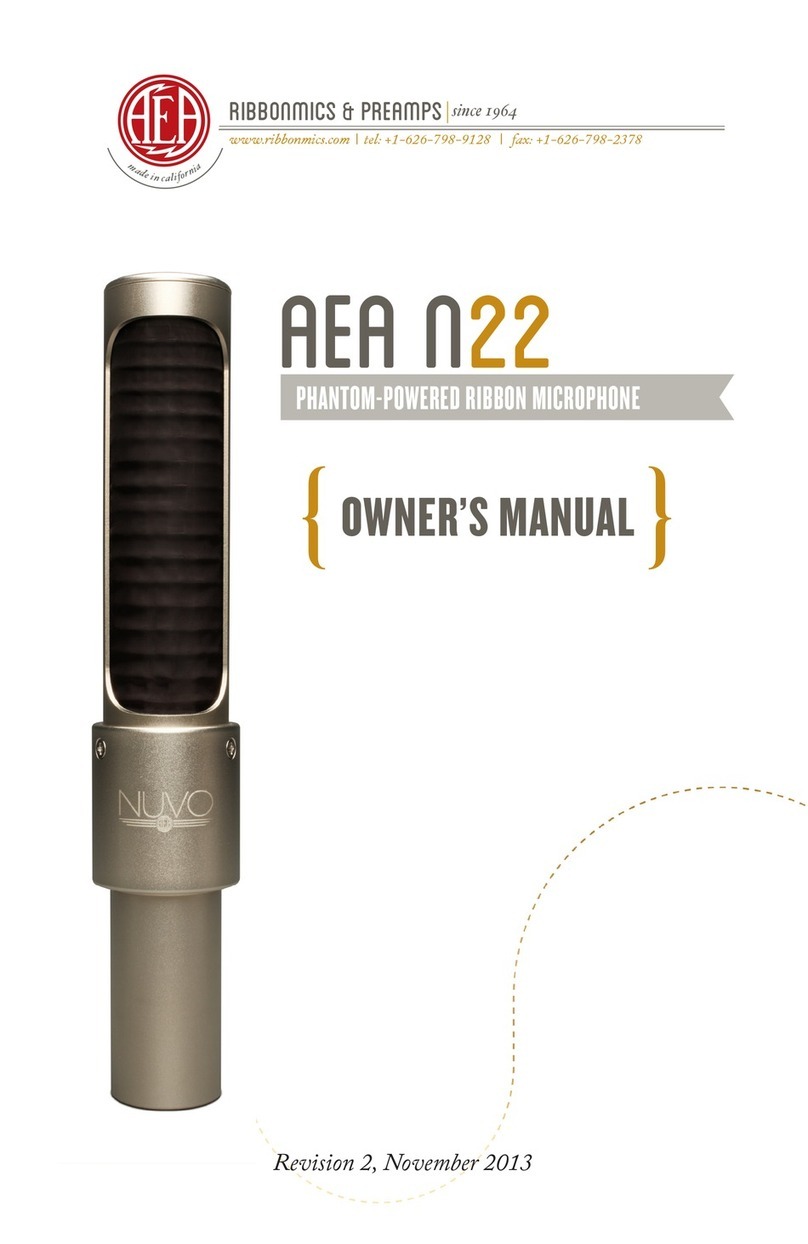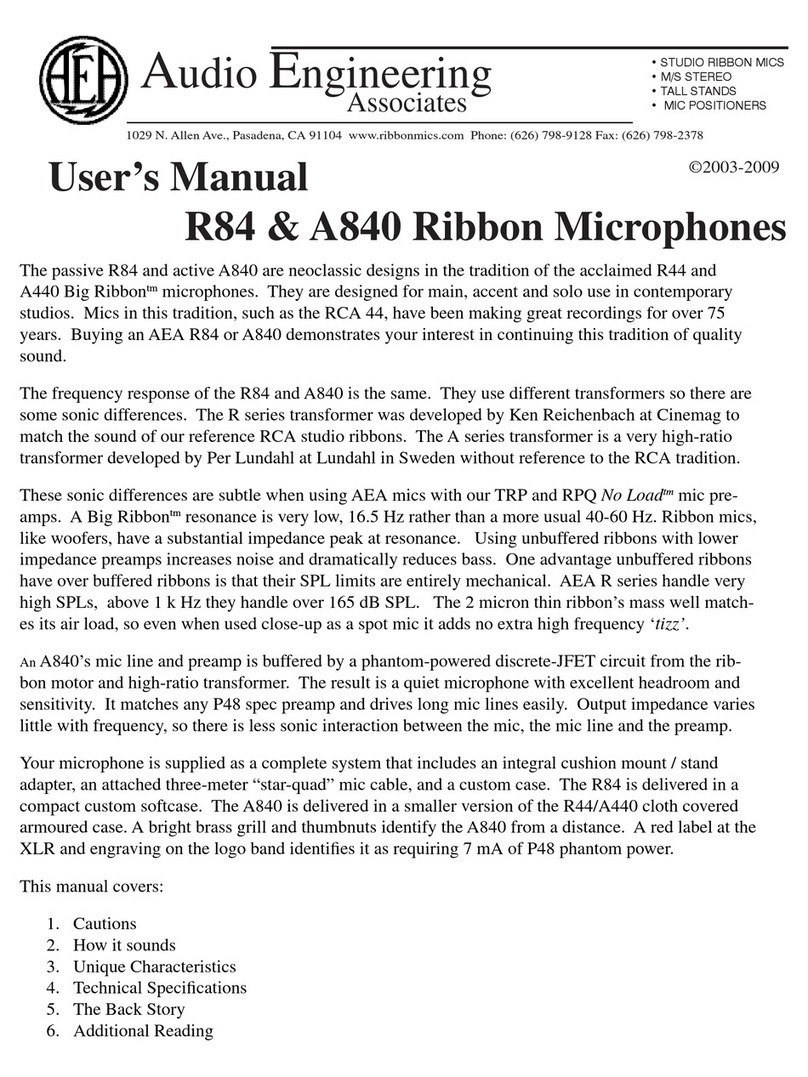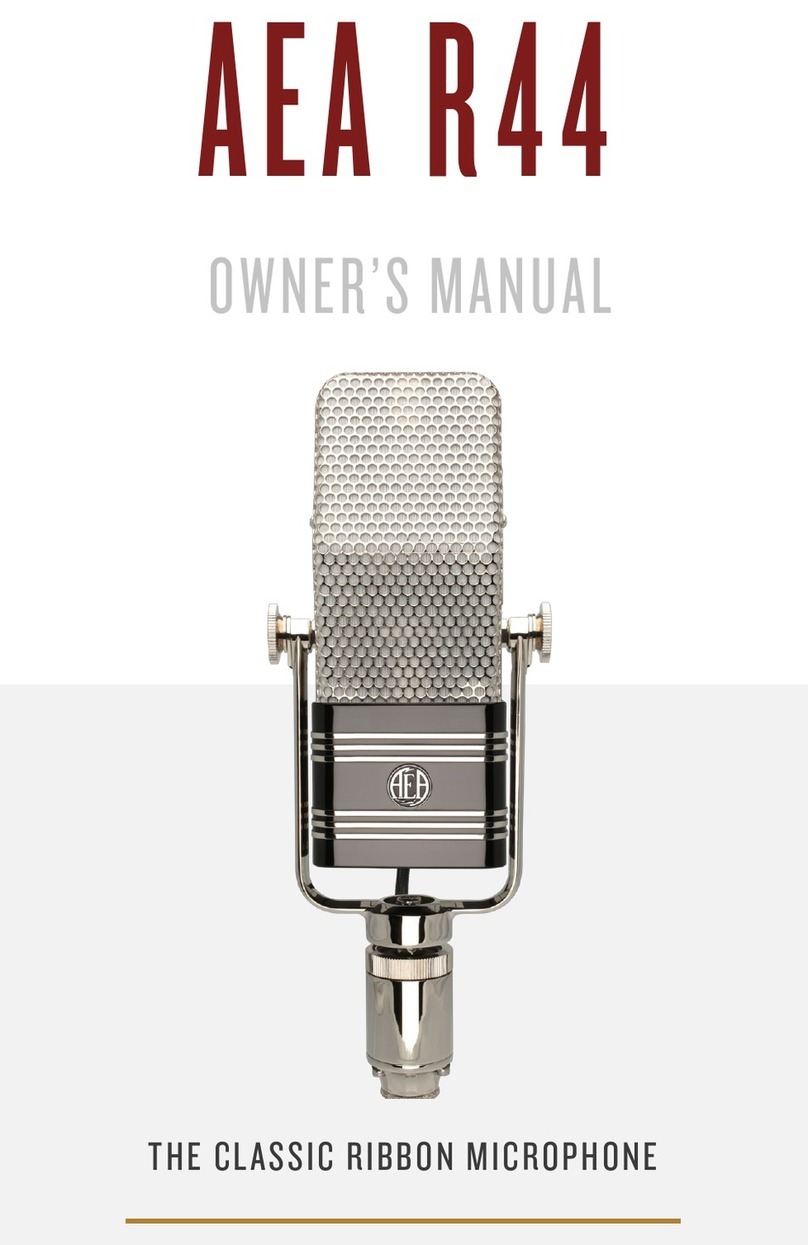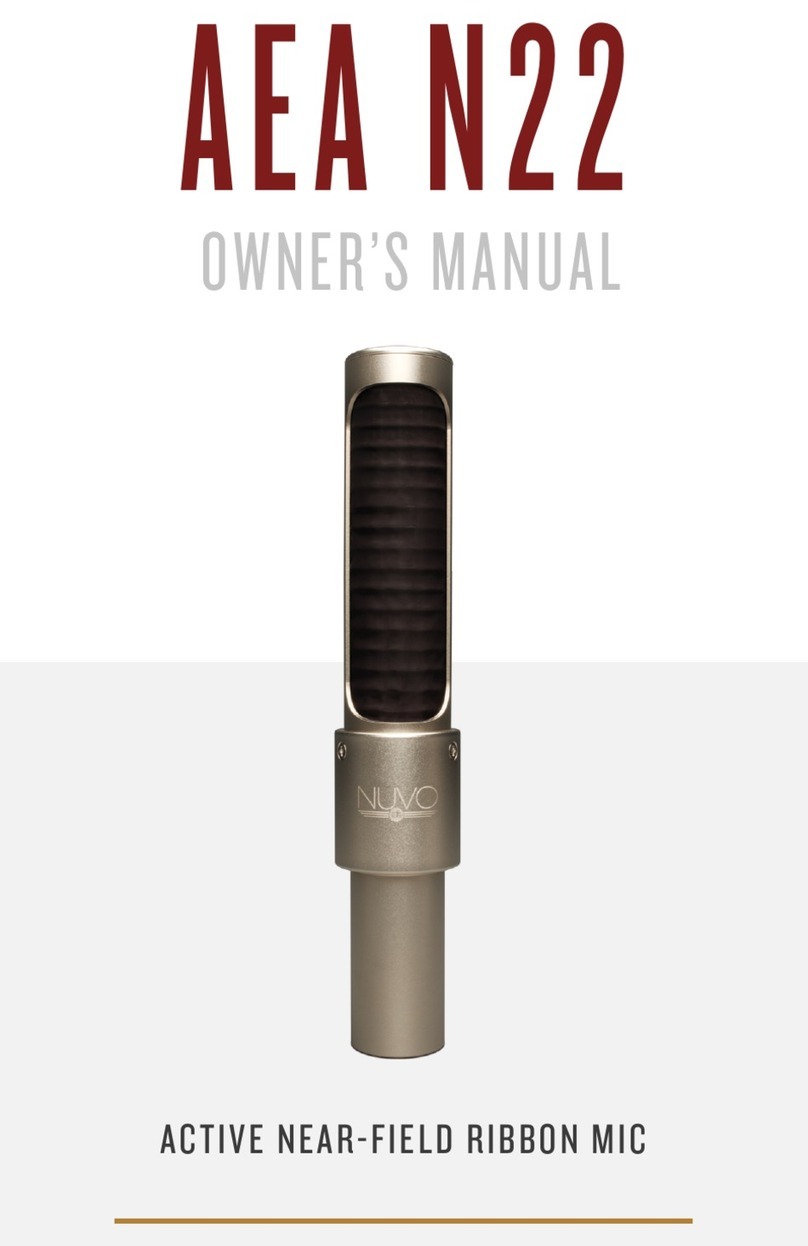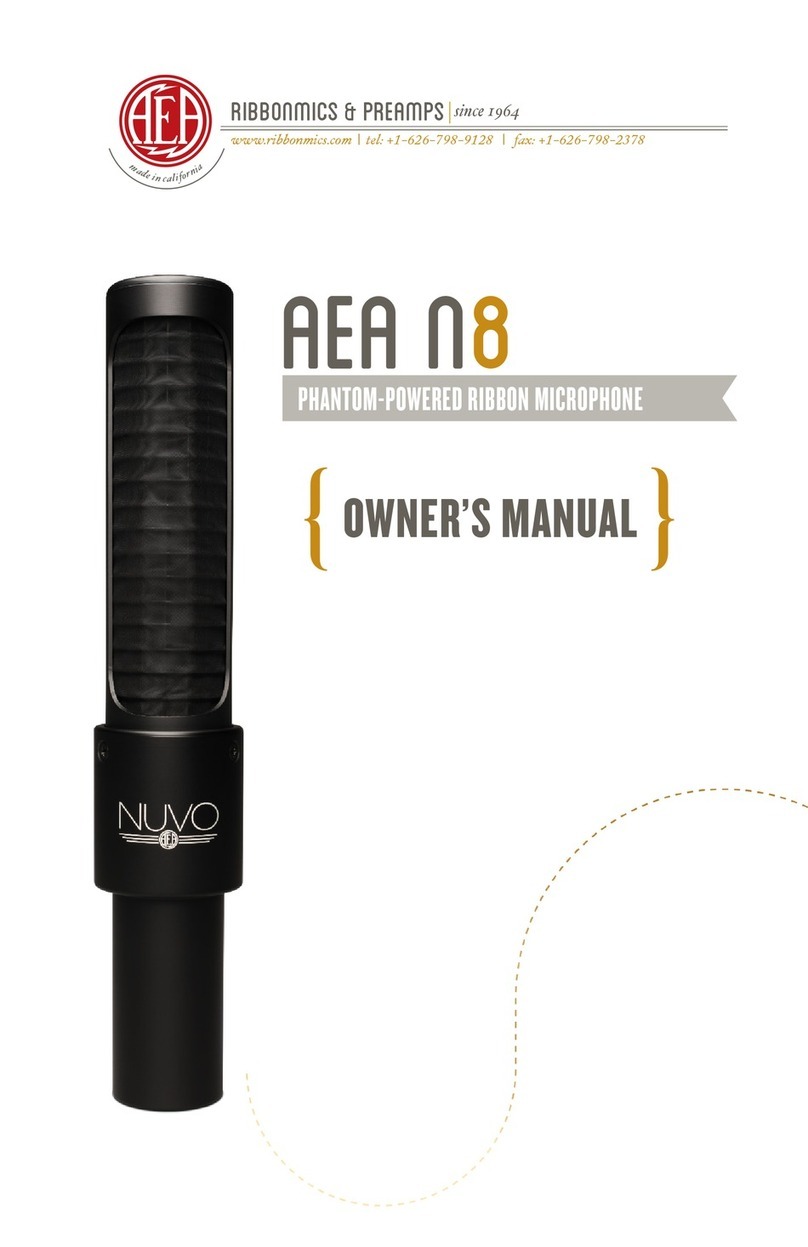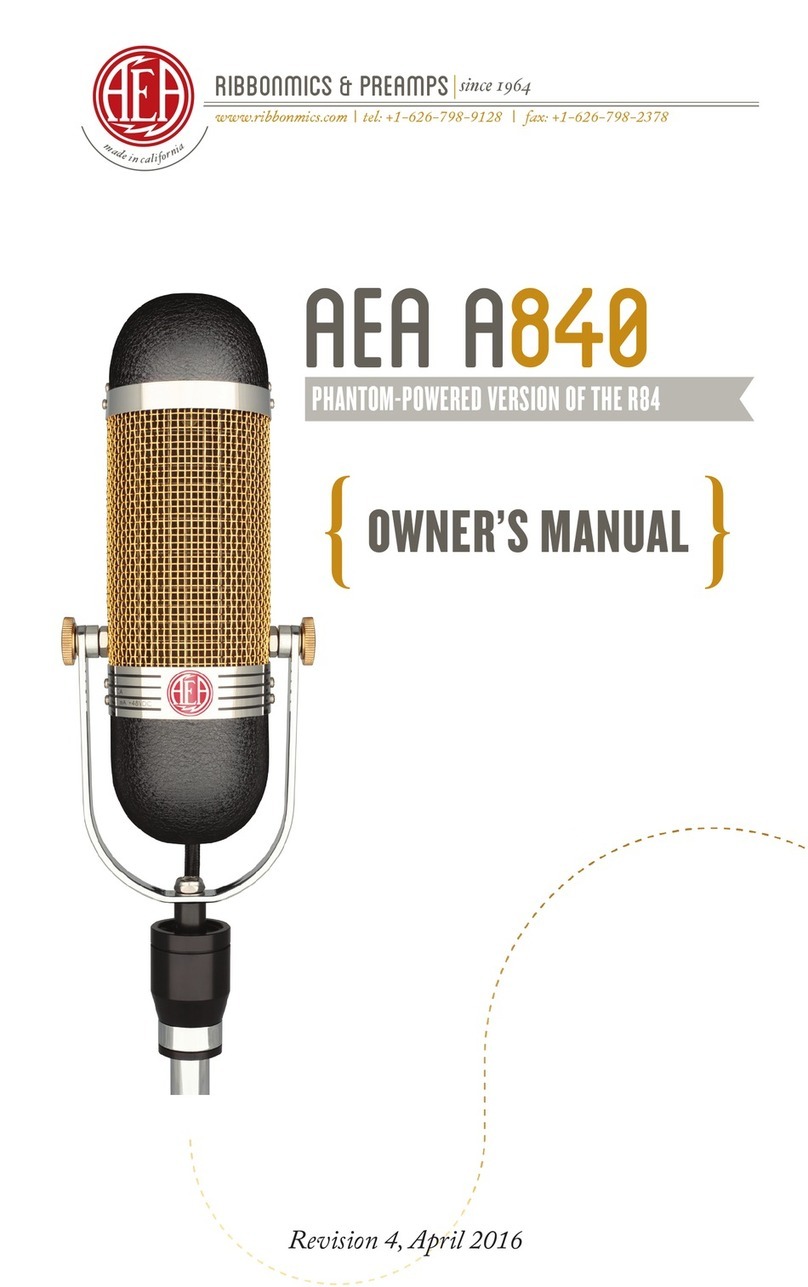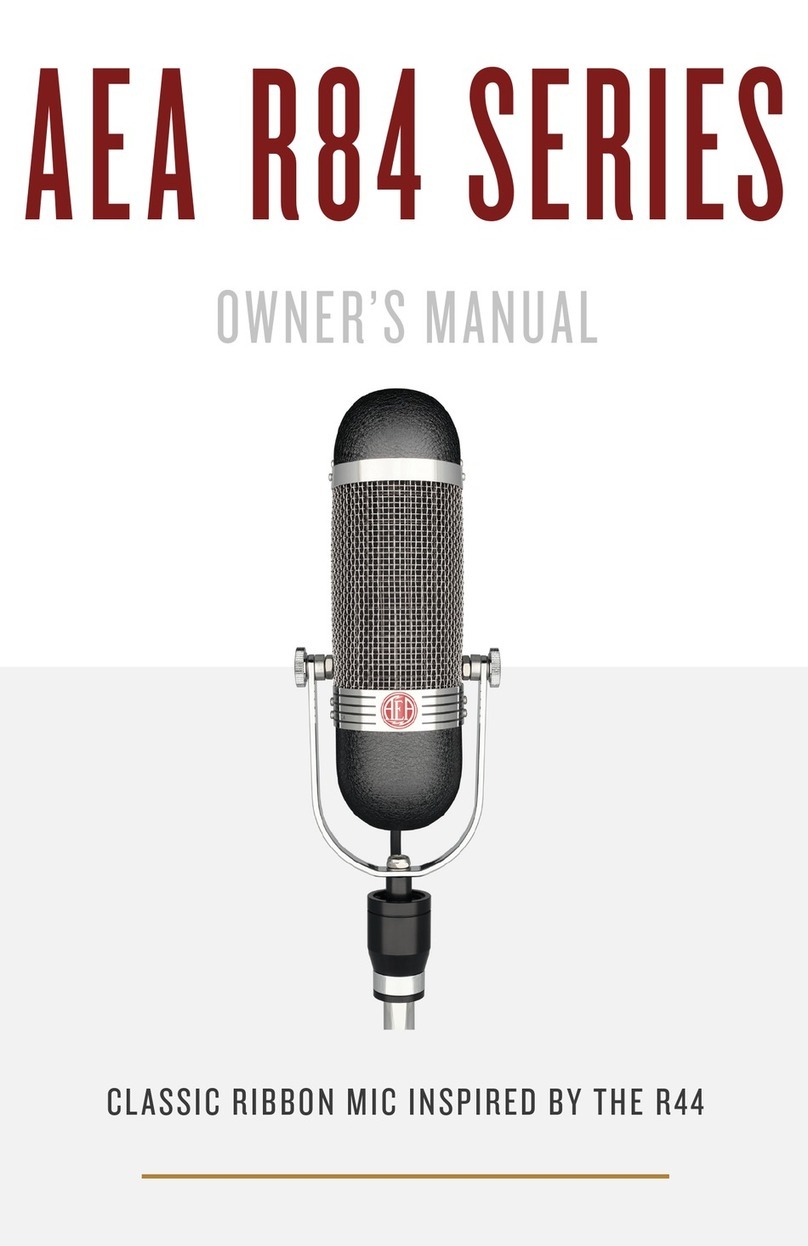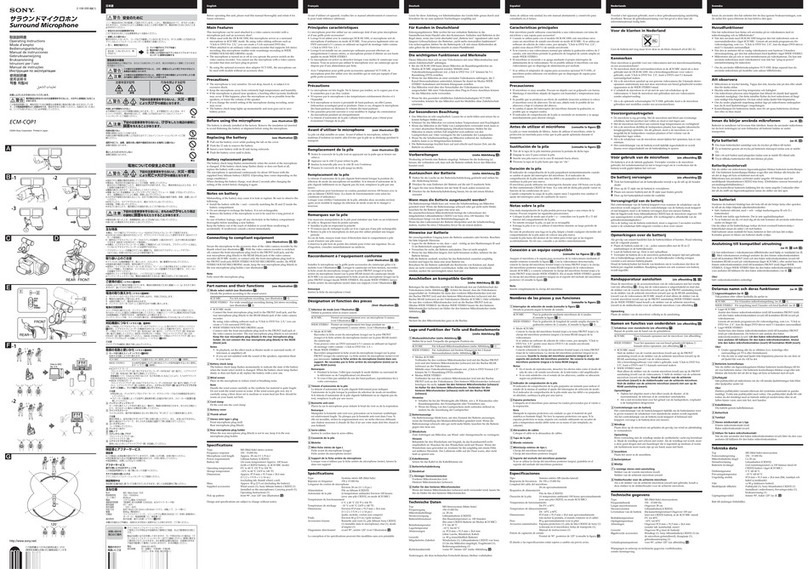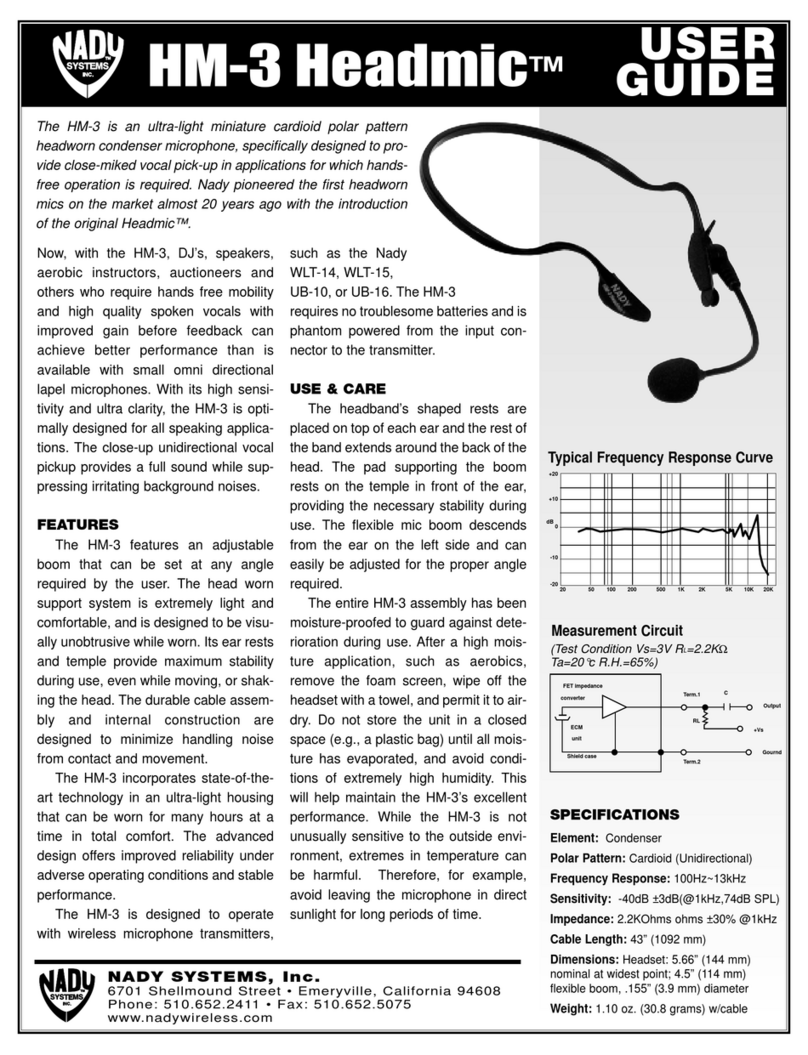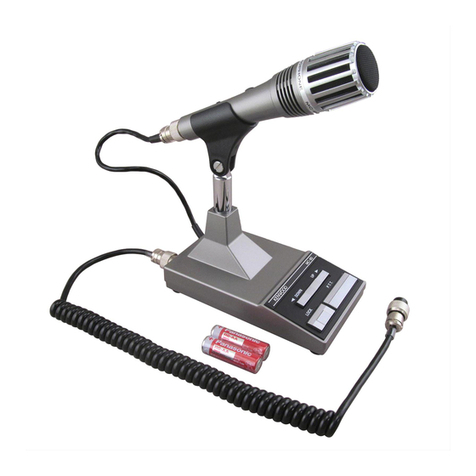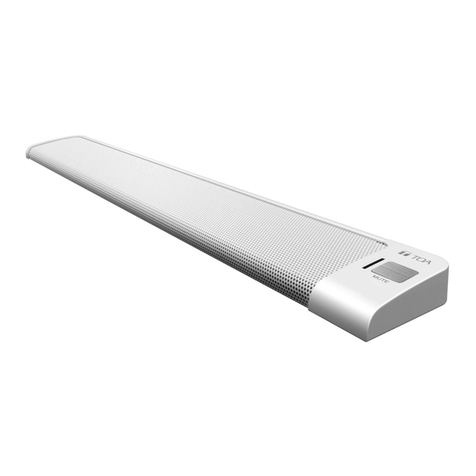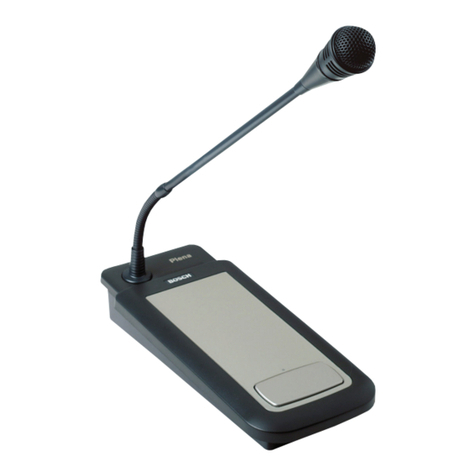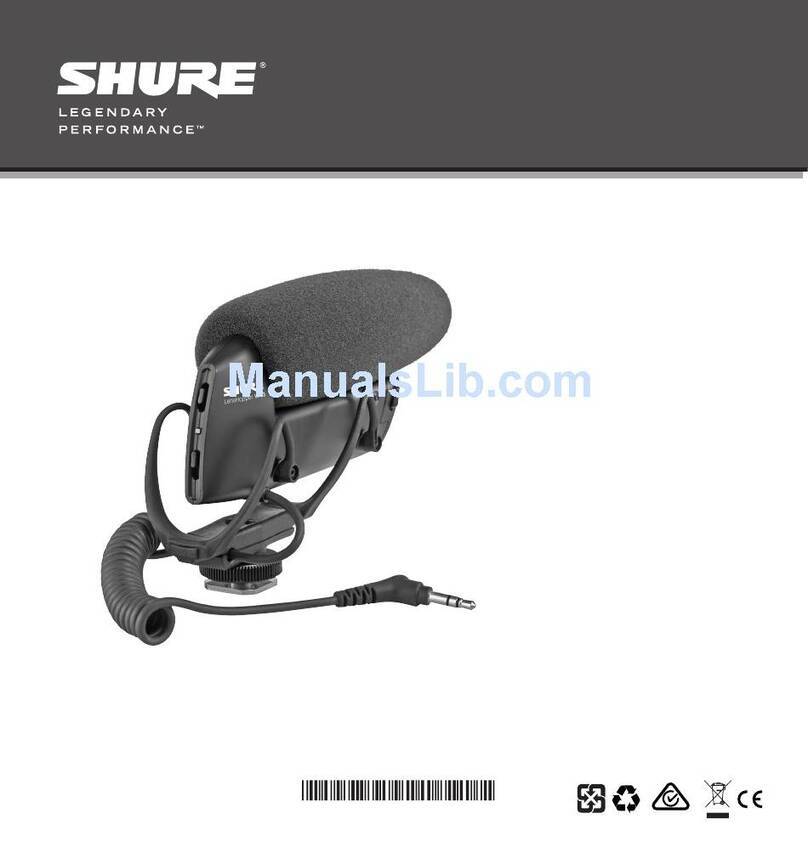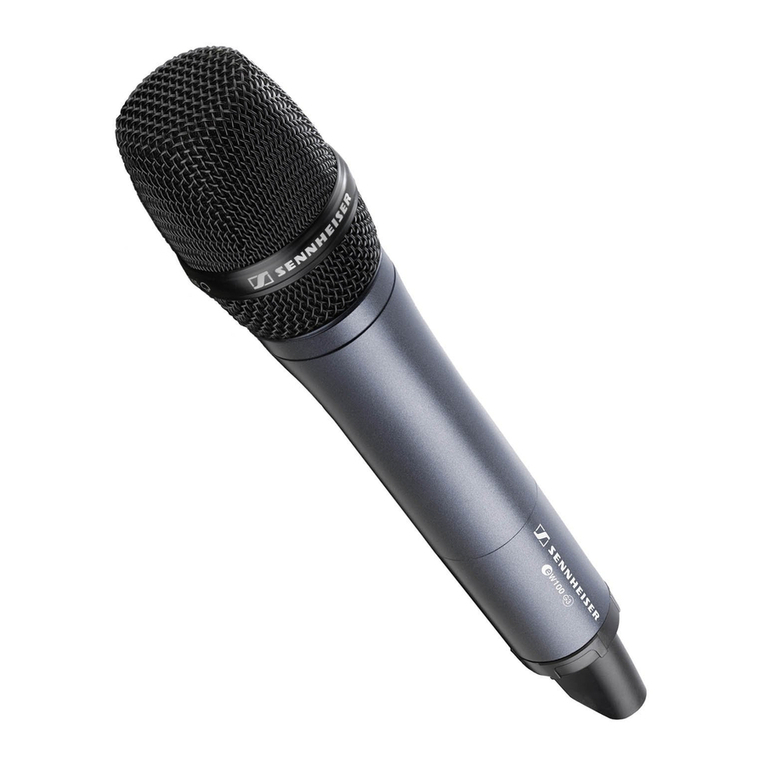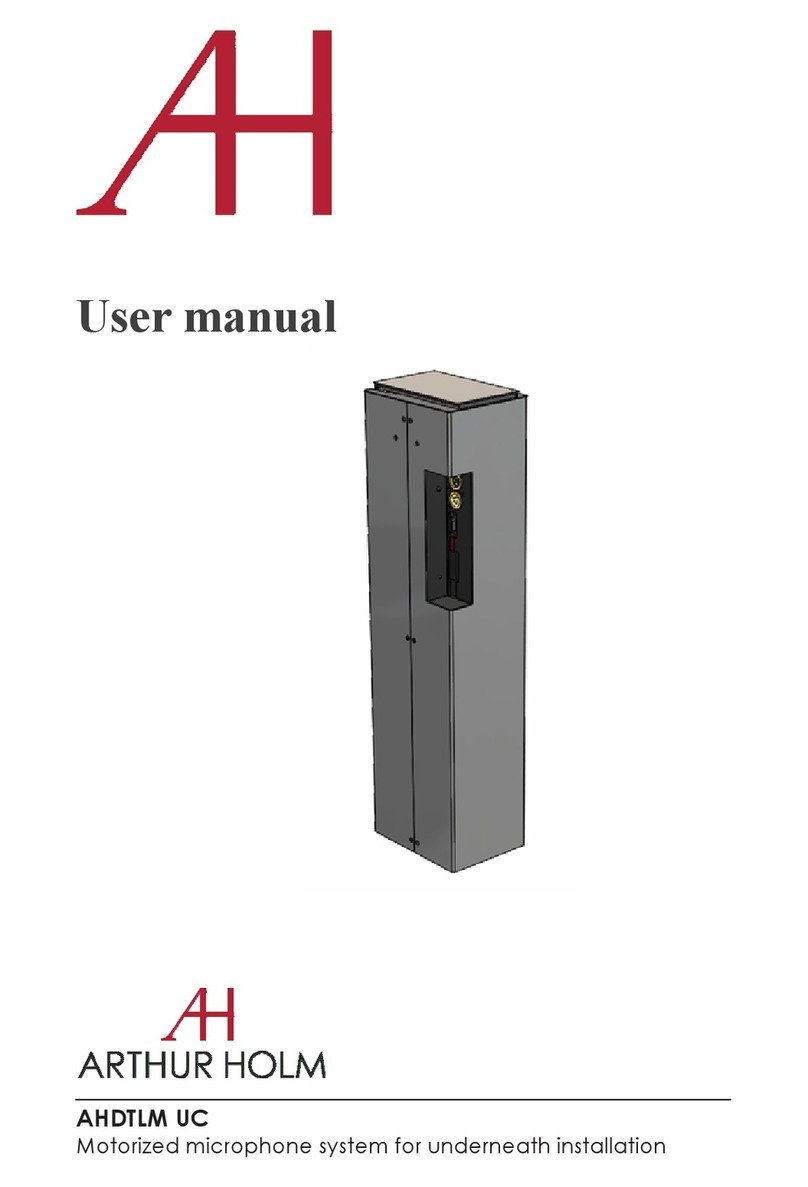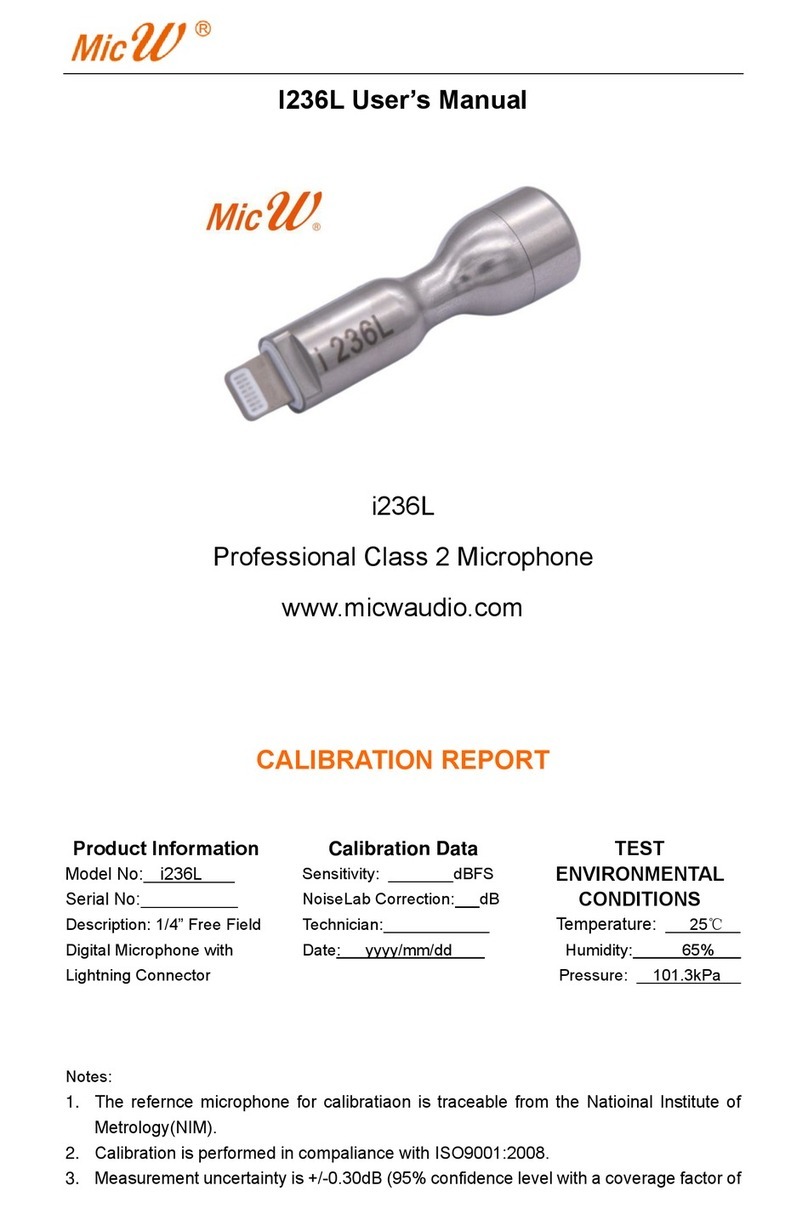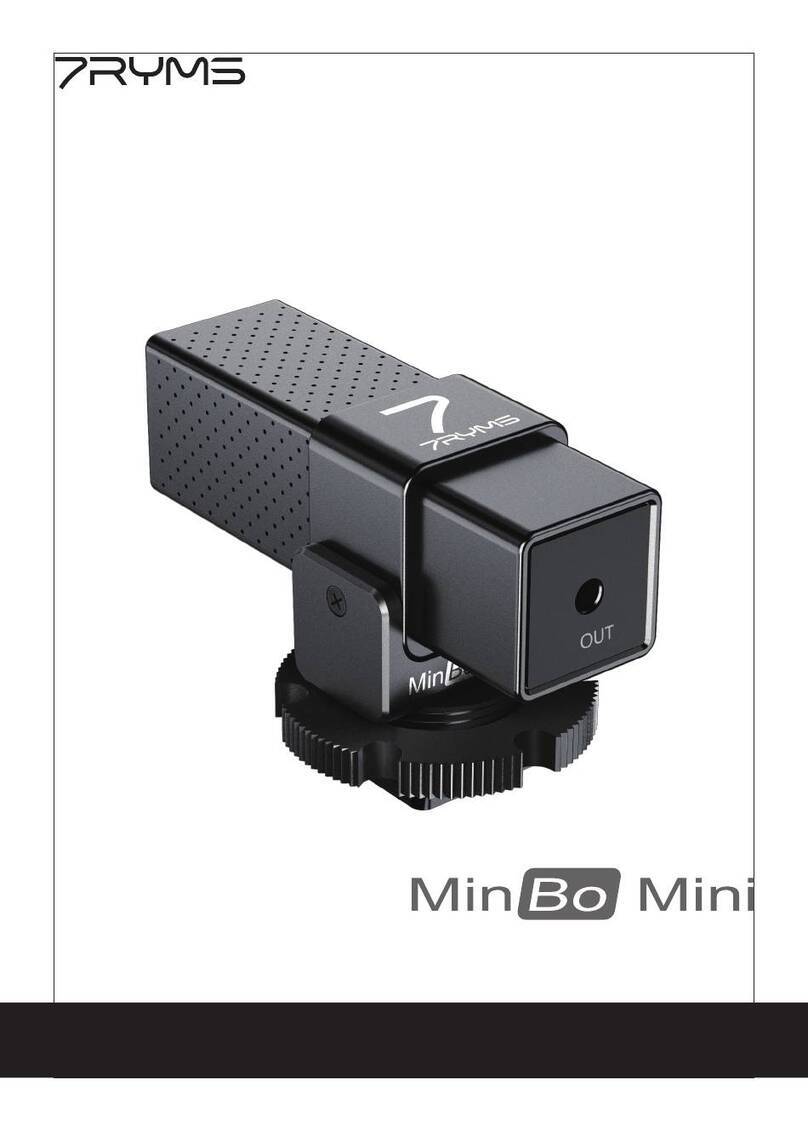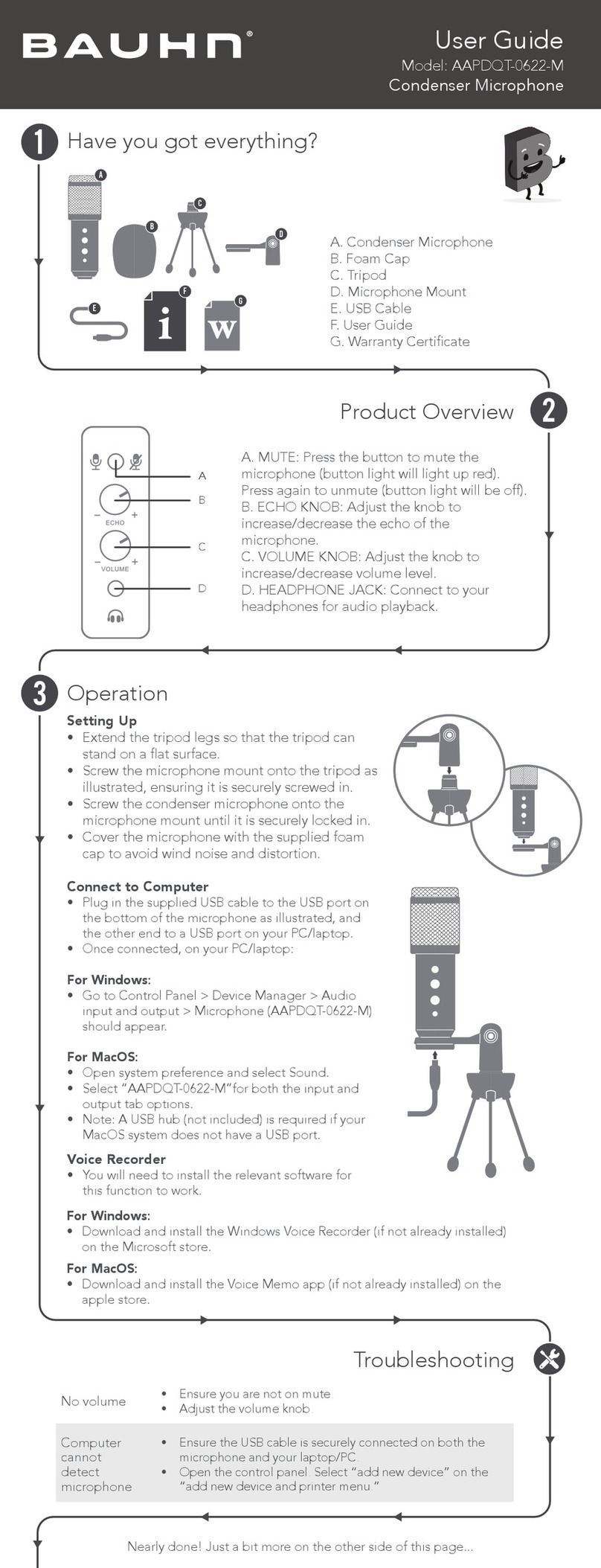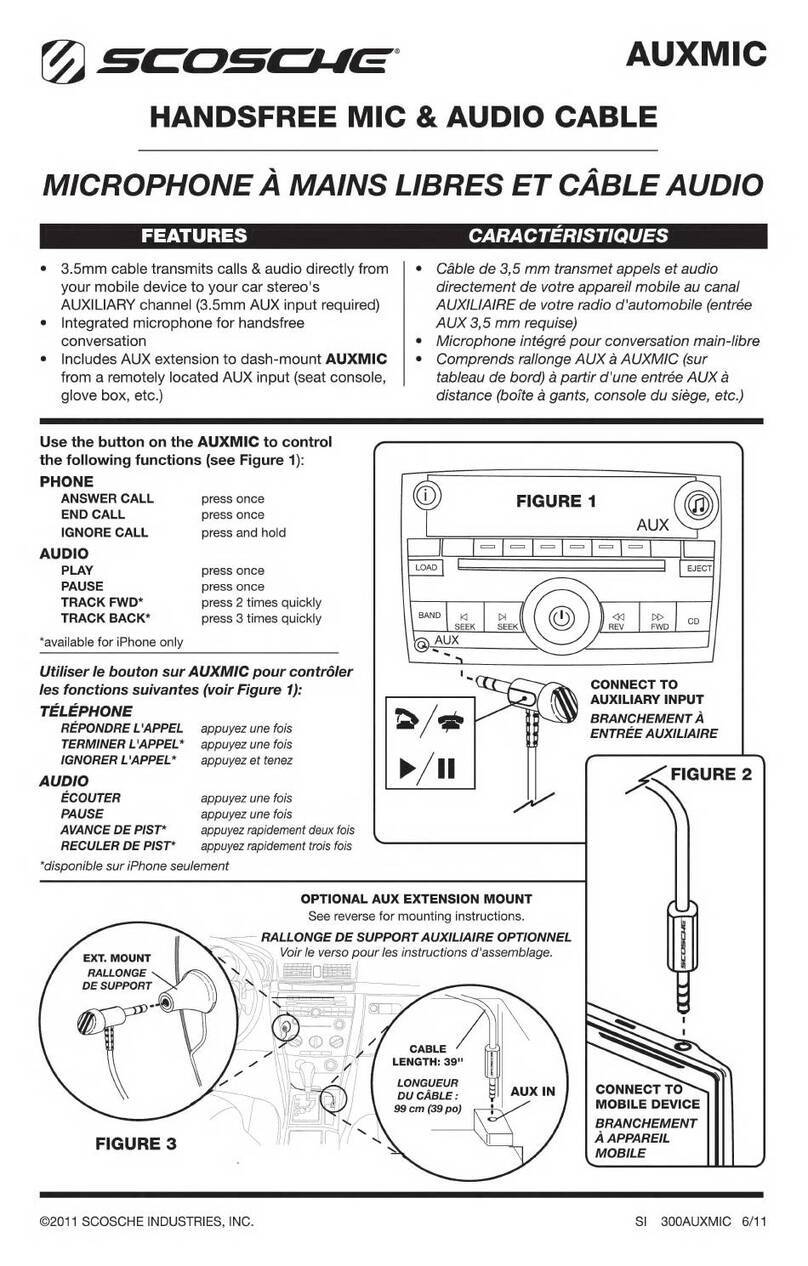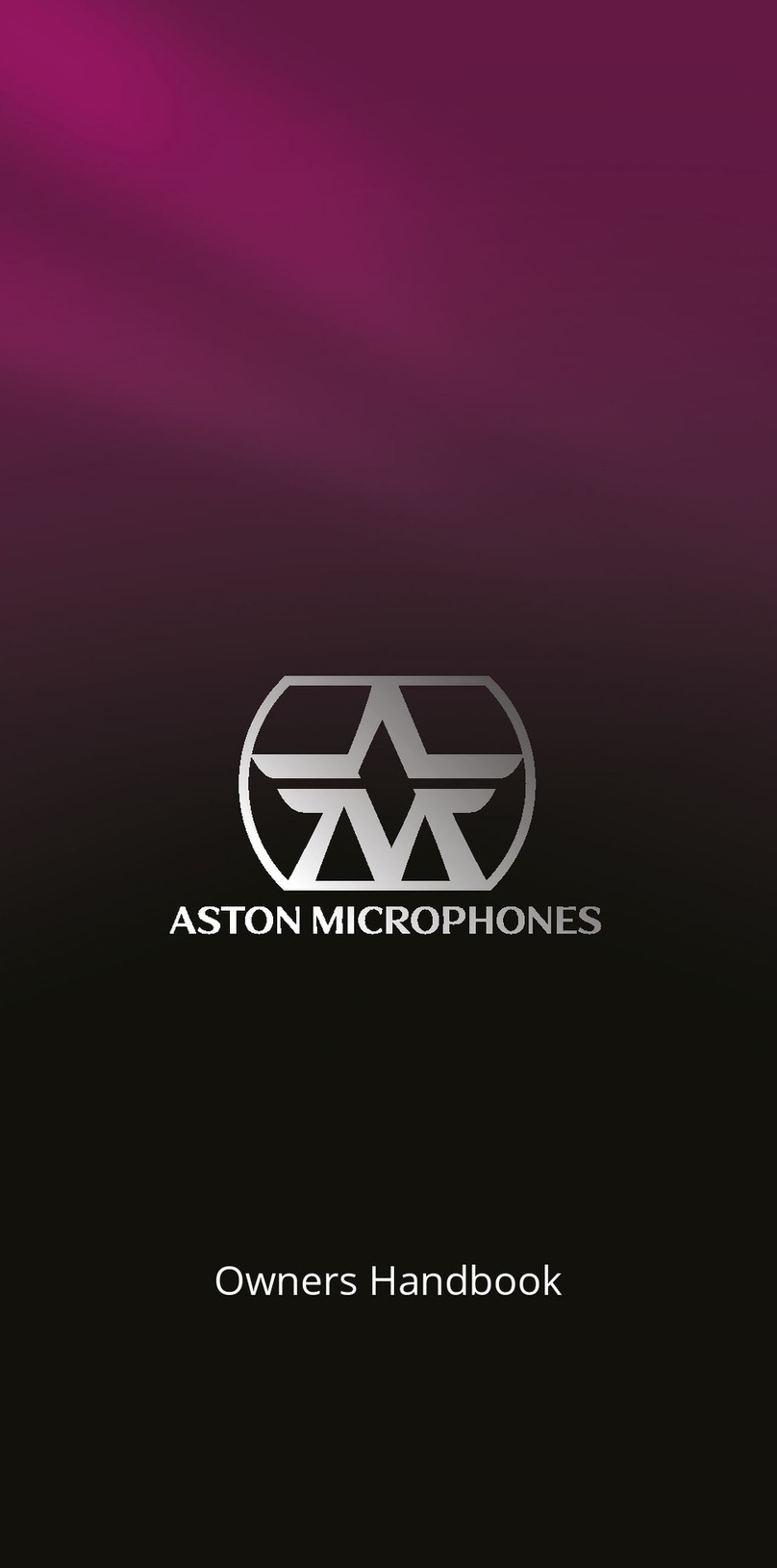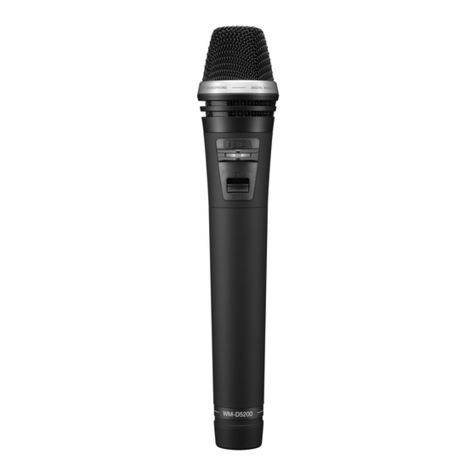AEA R84 series User manual

OWNER’S MANUAL
CLASSIC RIBBON MIC INSPIRED BY THE R44
AEA R84 SERIES

WELCOME
Congratulations on your purchase of an AEA R84 series microphone. R84
series mics are flexible and practical in a myriad of recording settings.
Developed to have a classic sound from the same family as the R44, R84
series microphones deliver exceptional headroom while maintaining an
intimate performance quality with smooth highs and extended lows.
These aspects, combined with the milder proximity effect, make R84
series mics incredibly well suited for both close-up and ambient mic
applications. It’s just as versatile as an R44, flattering voice, strings, brass
and drums alike. Protect it from puffs of air, phantom power, and tramp
iron, and it is nearly invulnerable. Treat it well, and it will last decades.
Your R84 series microphone is 100% handcrafted in Pasadena, CA. AEA is
a family owned company with a small crew of skilled technicians – most
of them being musicians themselves. Proudly independent, we still
manufacture all our ribbon microphones and preamps by hand from
locally sourced parts.
We hope your microphone will capture many magical performances that
touch the heart. This manual will help ensure that you get the best sound
and longevity from your new microphone. Please become part of the
AEA community by sharing your experiences via e-mail, phone or social
media.
Wes Dooley
Founder of AEA
2

CONTENTS
WELCOME
INTRODUCTION
SUPPORT
GENERAL GUIDELINES
APPLICATION ADVICE
SPECIFICATIONS
2
4
4
5
8
11
3

INTRODUCTION
The R84 and the R84A are pill-shaped, side-address, ribbon
microphones with a bidirectional pickup pattern. They are
assembled with the same Big Ribbon™ tuning (16.5 Hz) as the AEA/
RCA R44 and share many of the unique sound characteristics with
their historic predecessor. Designed to accommodate distant and
medium miking duties, they exhibit a flat frequency response when
placed 3 feet (1 meter) away from the source. As a result, the mic
performs well on a variety of recording applications including
vocals, brass, strings, woodwinds, guitars, and drums. R84 series
microphones continue to gain followers with their natural sound,
articulate midrange and forgiving nature. Whether used on vocals
or instruments, their performance is intimate, warm and detailed,
yet never harsh.
SUPPORT
If you should encounter any problems with your R84 microphone
or have questions regarding specific applications, please contact
quickest response.
To contact us by phone, please call +1-800-798-9127 from 9:00
a.m.- 5:00 p.m. PST Monday-Friday. AEA's repair center is located
at 1029 N. Allen Ave, Pasadena, CA 91104, U.S.A.
4
WARRANTY
Your R84 comes with a one-year
limited warranty on parts and labor,
shipping not included. Registering
your product with AEA will extend
the warranty to a full three years.
Scan the QR code or visit our website
to register.

GENERAL GUIDELINES
Your microphone is a valuable and important investment. Like most
recording equipment or musical instruments, it requires common
sense and basic care to keep it functioning properly. Given care, your
new microphone will perform dependably for decades.
PHANTOM POWER
R84 Passive Microphone
Phantom power is not required or recommended for the passive R84.
With a correctly wired cable and a properly working phantom power
supply, there is actually little danger of damaging an R84
microphone with phantom power. However, passive ribbons such as
the R84 can be damaged if ground (Pin 1) is accidentally shorted,
miswired, or hot patched in a patch bay to (Pin 2) or (Pin 3). Using
phantom power with a faulty or miswired cable or a defective supply
can severely stretch or break a ribbon.
Since passive ribbon microphones and other transformer-coupled
microphones can be particularly vulnerable to phantom-power, it is
recommended to make disengaging phantom-power before
plugging and unplugging the microphone a habit.
R84A Phantom-Powered Microphone
The R84A needs a standard 48V phantom-power source to operate,
but ensure that phantom power is disengaged before plugging and
unplugging the microphone. The loud 'pops' that occur when the
microphone is plugged in with phantom power engaged can
damage speakers, headphones, and ears.
The phantom current draw for active AEA ribbon mics is 7 milliamps.
IEC specifies P48 power which should be able to deliver 10 milliamps
per input. Some USB and battery-powered audio interfaces will not
deliver this. Please check the current values available on your unit to
ensure the best performance.
5

MICROPHONE STORAGE
Keep the microphone covered when it is not in use. This will reduce
the damage that may result from a gust of air. Place the supplied
protective bag over the microphone when it is not in use. For long-
term storage, keep the microphone in its protective case. An
unprotected ribbon microphone can attract minute iron particles,
sometimes known as "tramp iron". If allowed, tramp iron can
penetrate the screen of a ribbon mic, sufficiently build up in the
magnetic gap and rub against the ribbon, causing distortion,
electrical shorts or tearing of the ribbon.
AIR TURBULENCE
Avoid exposing the microphone to strong air turbulence. Ribbon
microphones can withstand very high SPL (Sound Pressure Level), but
can be damaged by a strong gust of air or high levels of very low
frequency sound waves (from a kick drum or bass cabinet). This can
stretch the ribbon, reducing overall output, especially at high
frequencies.
Take precautions when recording any source that moves air. To avoid
damage, follow "The Hand Test": put the back of your hand where
the mic will be positioned; if you can feel the moving air, place a
pop-filter between the microphone and the source or simply pull the
mic farther back. When recording kick drums or bass guitar cabinets,
angle the microphone so that no air blasts the microphone directly
on-axis from the front or back.
Never blow directly into any microphone to test it. Not only does this
force moisture and dirt into the microphone, strong air movement
also can stretch the ribbon and while it may not break, it nonetheless
could significantly degrade the microphone’s performance. Though
the ribbon in your R84 is protected by multilayer screens and
acoustic cloths which provides reasonable wind protection while still
allowing good high-end response, take care to avoid high-wind
outdoor environments.
6

STRAY
MAGNETIC FIELDS
Ribbon microphones are fundamentally prone to picking up strong
external magnetic fields caused by light dimmers or nearby power
transformers. Guitar players will know this phenomenon from single-
coil pickups. Even though much attention was paid
to suppressing such sensitivity to external magnetic fields in
the design of your microphone, it is still possible that you might
encounter this problem. If you should pick up a hum, try rotating or
moving the microphone to find a spot where the hum disappears,
and try eliminating potential sources of stray magnetic fields. You
can use the microphone to find where hum is originating. Rotate the
mic for maximum interference and move it back and forth to sense
its direction.
The high-performance magnets used in AEA microphones are
incredibly strong, and a significant amount of stray magnetic field
lines surround the microphone. Avoid placing the microphone in
close proximity to hard drives, credit cards, analog tape, or any other
magnetically sensitive items to prevent any data loss.
MICROPHONE POSITIONING
Always use a sturdy microphone stand. While the R84 was designed
to work well with all standard microphone stands, a high-quality
boom stand will make your life a little bit easier. Mounting the
microphone on a strong, sturdy microphone stand with a heavy base
(or tripod) is essential. If you are using a boom, make sure that it is
properly balanced and that the tripod legs are positioned
appropriately to prevent tipping.
7

A FIGURE-OF-8 MICROPHONE
Figure-of-8 microphones
are constructed with
positive polarity on the
front and negative polarity
on the back. Positive
pressure on the front side
of the ribbon produces a
positive voltage on (Pin-2),
with respect to (Pin-3) on
the output connector.
The sound of your R84 series microphone is slightly different
between the front and the back — subtle, but sufficient to offer two
“flavors.” In addition to polarity, this is the result of using two wraps
of grille cloth on the back and only one on the front. When using
the rear lobe, remember to invert the polarity on your preamp or
DAW. This ensures your recordings with the back lobe will be in-
phase with other microphones.
HOW TO MINIMIZE BLEED
A significant and ever-present challenge in contemporary studio
recording is minimizing leakage from nearby instruments into the
various microphones. The deep nulls of ribbon microphones provide
good rejection of unwanted sounds, which can be beneficial in
sound reinforcement situations where feedback is always a threat.
8
APPLICATIONS ADVICE
We actively encourage users to visit AEAribbonmics.com to
access our comprehensive collection of in-depth articles and
tutorials featuring the R84 series microphone, along with a
library of audio and video demonstrations of the R84 series in
action.

While gobo isolation panels can be effective in isolating performers
from each other, they introduce their own set of problems - including
reflections close to the performers and/or microphones that result in
comb-filter distortions. Because gobos usually are bulky and occupy
valuable floor space, they also inhibit the ability of the musicians to
hear and see each other easily. Such a setup requires complex and
often cumbersome headphone monitor mixes for the musicians.
Since the R84 is bidirectional, it exhibits nulls at right angles to the
principal axis. These nulls produce a “plane of rejection” around the
sides, top and bottom of the mic that can be used effectively to
reduce leakage. Simply arrange the musicians so that nearby
instruments are placed in the “null” of their neighbor’s microphone,
and vice versa. Although this does not entirely eliminate the need for
gobos, it can significantly reduce their number.
Keep in mind that a certain degree of bleed is not necessarily bad.
For some styles and genres, it can, in fact, be beneficial to embrace a
little bit of bleed in order to create cohesive and natural sounding
recordings. The important thing to listen for is whether or not other
instruments that bleed into a specific instrument microphone still
sound natural. You will generally find that well-designed ribbon
microphones like the R84 capture a natural off-axis sound, which
means that bleed from other instruments can contribute to the
overall sound in a pleasing way.
PROXIMITY EFFECT
Proximity effect, a
characteristic of all
directional
microphones, is a rise
in low-frequency
response at closer
working distances.
This can be used to
superb effect,
particularly with
deeper vocals to
to enhance richness and depth. A potential trade-off is reduced
articulation resulting from the masking effect on the treble due to
“excessive” bass boost.
9

10
R84 series ribbon microphones deliver classic ribbon mic tonality
similar to the legendary R44, but engineered with an extended top-
end and reduced proximity effect. It is perfect for mid-range and
close-range recording. The R84 exhibits a flat frequency response
when placed 3 feet (1 meter) away from the source.
FREQUENCY RESPONSE
Data below 200 Hz omitted due to measuring room restrictions.
0 dVB is equivalent to 2.5 mV/Pa (-52 dBV)
Normalized to 0 dB at 1kHz. 1/3 octave smoothing

11
SPECIFICATIONS
Operating Principle:
Directional Pattern:
Frequency Range:
Polarity:
Off-Axis Response
Horizontal:
Vertical:
Transducer Element
Material:
Thickness:
Width:
Length:
Microphone Dimensions
Height:
Width:
Depth:
Weight with cable:
Shipping Weight:
Connector:
R84 PassiveMicrophone
Maximum SPL:
Sensitivity:
Output Impedance:
Rec Load Impedance:
Phantom Power:
R84A Phantom-Powered
Microphone
Maximum SPL: Sensitivity:
Output Impedance:
Recommended Load
Impedance:
Phantom Power:
Accessories Included
Pressure gradient transducer
Bidirectional
<20 Hz to >20 kHz
Pin 2 high for positive pressure on front of mic
Up to 90 dB rejection at right angles to the front and
back axis.
Level changes with angle of incidence, but frequency
response is consistent.
Pure aluminum corrugated ribbon
1.8 µm
0.185 in (4.7 mm)
2.35 in (59.7 mm)
11.6 in (29.5 cm)
3.9 in (9.9 cm)
2.5 in (6.4 cm)
3 lb (1.36 kg)
4 lb (1.8 kg)
XLR-3M wired to a 10' (3 m) captive cable
165+ dB SPL (1% third harmonic > 1 kHz)
2.5 mV/Pa (-52 dBV) into loaded circuit
270 Ω nominal
1.2K Ω or greater
Not required or recommended
141+ dB SPL (1% third harmonic > 1 kHz)
6.3 mV/Pa (-44 dBV) into loaded circuit
92 Ω nominal
1.0K Ω or greater
P48 phantom power, 7 mA
Softbag storage case, user manual
Note: The phantom-powered R84A was previously known as the A840.
Other manuals for R84 series
3
This manual suits for next models
1
Table of contents
Other AEA Microphone manuals

